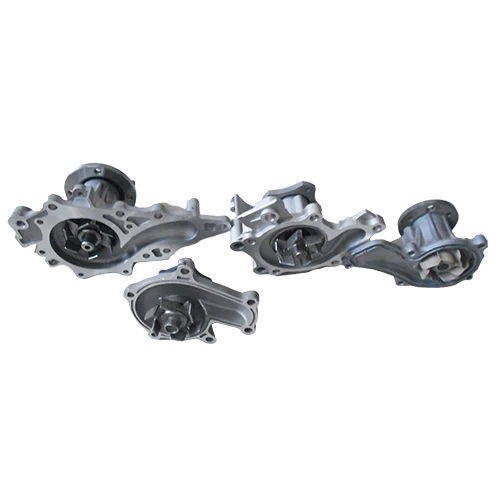Mobile:+86-311-808-126-83
Email:info@ydcastings.com
die casting methods
Die Casting Methods An Overview
Die casting is a versatile and efficient manufacturing process used for producing complex metal parts with high precision. It involves forcing molten metal into a mold cavity under high pressure, resulting in a finished product that closely resembles the original mold design. This technique is widely employed in industries such as automotive, aerospace, electronics, and consumer goods due to its ability to produce large quantities of parts quickly and with minimal wastage. In this article, we will explore the various die casting methods, their applications, and their advantages.
Types of Die Casting Methods
1. High-Pressure Die Casting (HPDC) High-pressure die casting is the most commonly used method in the industry. In this process, molten metal, typically aluminum, zinc, or magnesium, is injected into a steel mold at extremely high pressures, ranging from 1,000 to 30,000 psi. The high pressure ensures that the molten metal fills all the intricate details of the mold, resulting in a precise part. HPDC is suitable for mass production and is ideal for parts like engine blocks, transmission cases, and automotive components.
2. Low-Pressure Die Casting (LPDC) Low-pressure die casting uses a lower injection pressure, typically around 1 to 15 psi, to fill the mold. This method is often used for creating thinner-walled components and allows for better control over the metal flow, which reduces the likelihood of defects such as air pockets or porosity. LPDC is particularly beneficial for producing large, hollow parts, such as aluminum casings or thick-walled components used in the aerospace industry.
3. Gravity Die Casting In gravity die casting, the molten metal is poured into the mold under the influence of gravity rather than through high pressure. This method is less complex and typically used for applications that require lower production rates and less precision. While it may not achieve the same level of detail as HPDC, gravity die casting is beneficial for producing larger parts or those that require more significant tolerances.
4. Vacuum Die Casting Vacuum die casting is a variation of gravity die casting that involves creating a vacuum inside the mold to draw the molten metal into the cavity. This technique reduces the occurrence of gas porosity and leads to better surface finishes. It is especially suitable for high-quality components used in the automotive and aerospace sectors.
die casting methods

Advantages of Die Casting
One of the primary advantages of die casting methods is the ability to produce highly intricate geometries with tight tolerances. The high precision achieved in the process reduces the need for extensive machining and finishing, resulting in lower production costs. Additionally, die casting can accommodate a variety of alloys and materials, making it versatile for different applications.
The speed of production is another significant benefit. With the capability to produce thousands of parts per hour, die casting is an ideal choice for industries requiring large volumes. The quick turnaround time can enhance supply chain efficiency and meet market demands promptly.
Moreover, die casting contributes to sustainability in manufacturing. The process minimizes material waste, as excess metal can be recycled and reused in future runs. As industries increasingly prioritize environmentally friendly practices, die casting stands out as a responsible manufacturing method.
Conclusion
In conclusion, die casting methods offer a range of advantages that make them invaluable in modern manufacturing. The choice of method depends on the type of material, required precision, production volume, and design complexity. As technology advances, die casting continues to evolve, integrating new materials and techniques to enhance efficiency and product quality. Its significance in various industries underscores the importance of this manufacturing process in shaping the future of production.
-
Why Should You Invest in Superior Pump Castings for Your Equipment?NewsJun.09,2025
-
Unlock Performance Potential with Stainless Impellers and Aluminum End CapsNewsJun.09,2025
-
Revolutionize Your Machinery with Superior Cast Iron and Aluminum ComponentsNewsJun.09,2025
-
Revolutionize Fluid Dynamics with Premium Pump ComponentsNewsJun.09,2025
-
Optimizing Industrial Systems with Essential Valve ComponentsNewsJun.09,2025
-
Elevate Grid Efficiency with High-Precision Power CastingsNewsJun.09,2025











